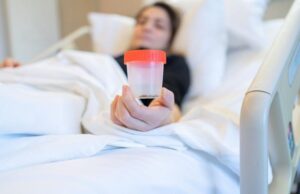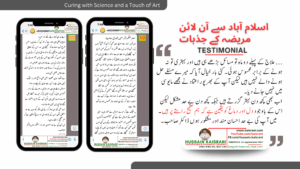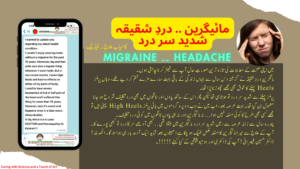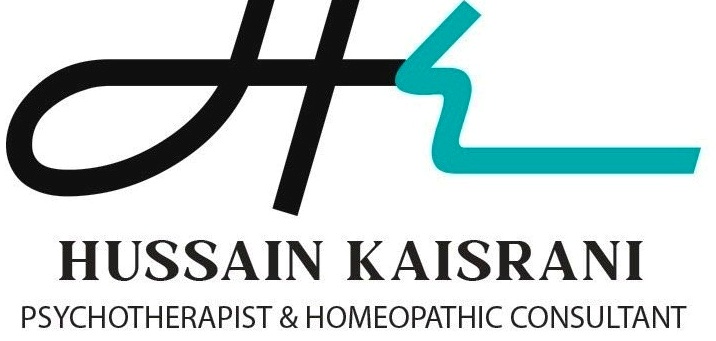Bright’s disease is a historical classification of kidney diseases that would be described in modern medicine as acute or chronic nephritis. The term is no longer used, as diseases are now classified according to their more fully understood etiologies.[1][2] [3]
It is typically denoted by the presence of serum albumin (blood plasma) in the urine, and frequently accompanied by edema (tissue particulate).
Symptoms of Bright’s disease
These associated symptoms in connection with kidney disease were first described in 1827 by noted English physician Richard Bright.[4] Since that time, it has been established that the symptoms, instead of being, as was formerly supposed, the result of one form of disease of the kidneys, may be dependent on various morbid conditions of those organs.[5] Thus, the term Bright’s disease, which is retained in medical nomenclature in honor of Dr. Bright, must be understood as having a strictly historical application.[6]
The symptoms are usually of a severe nature. Back pain, vomiting and fever commonly signal an attack. Edema, varying in degree from slight puffiness of the face to an accumulation of fluid sufficient to distend the whole body, and sometimes severely restrict breathing, is a very common ailment. The urine is reduced in quantity, is of dark, smoky or bloody color, and exhibits to chemical reaction the presence of a large amount of albumin, while, under the microscope, blood corpuscles and casts, as above mentioned, are found in abundance.
This state of acute inflammation may severely limit normal daily activities, and if left unchecked, may lead to one of the chronic forms of Bright’s disease. In many cases though, the inflammation is reduced, marked by increased urine output and the gradual disappearance of its albumen and other abnormal by-products. A reduction in edema and a rapid recovery of strength usually follows.
Treatment of Bright’s disease
Acute Bright’s disease was treated with local depletion, warm baths, diuretics, and laxatives. There was no successful treatment for chronic Bright’s disease, though dietary modifications were sometimes suggested.
Well-known victims of Bright’s disease
- Emily Dickinson, renowned 19th century poet.
- Robert Sengstacke Abbott, founder of the Chicago Defender, one of the first black daily newspapers, 1940.
- Isaac Albéniz, Spanish composer
- Paul Anderson world renowned strongman
- Chester Arthur, the 21st President of the United States
- Francis C. Barlow, Lawyer, governor, politician and Union general, 1896.
- Walter P. Brownlow, Tennessee Congressman, 1910.
- Mikhail Bulgakov, the twentieth-century Russian author of the classic novel The Master and Margarita, as well as various other novels and plays.
- John Bunny, Vaudeville and silent film comedian, 1915.
- George-Étienne Cartier, one of the founders of the Canadian Confederation
- Lorne Chabot, former NHL goaltender, 1946.
- Larry Corcoran, Chicago White Stockings (the modern day Chicago Cubs) hurler in the early 1880s
- James Creelman, renowned yellow journalist, died of the disease in February 1915 on his way to cover World War I from the German front.
- Louis Cyr, world renowned strongman
- Antonín Dvo?ák, Czech composer 1904 in Prague.
- Catherine Eddowes, Second to last Jack The Ripper victim, 1888.
- Arnold Ehret (1866-1922) a diet reformer, had cured himself of Bright’s disease after he had been given up by medical doctors and after a nature cure could only bring him temporary relief. He discovered that fasting and diet “free of mucus and albumin”, consisting mainly of fruits, cured not only his illness but other chronic disease. [7]
- Elizabeth F. Ellet (1818-1877), American writer and poet
- Father F.W. Faber, wrote the hymn ‘Faith of Our Fathers’
- Sydney Greenstreet, movie star, In eight years he made 24 films, died in 1954.
- Florence Harding, first wife of Warren G. Harding
- Dean Hart, 36, professional wrestler (member of the prestigious Hart family).
- Janear Hines, 30, actress, 1981: daughter of jazz pianist Earl Hines
- Winifred Holtby, author of South Riding.
- Colonel Prentiss Ingraham (born December 28, 1843), soldier, author, and writer of over 600 dime novels, 1904.
- Robert Wood Johnson I, a co-founder of Johnson & Johnson.
- Kitty Kiernan, fiancée of assassinated Irish revolutionary leader and Chairman of the Provisional Government Michael Collins.
- H. P. Lovecraft, science-fiction/horror author died from a combination of Bright’s Disease and intestinal cancer.
- Sir Alexander MacKenzie, Scottish/Canadian explorer whose accomplishments included the first transcontinental crossing of North America north of Mexico and the discovery of the MacKenzie River, 1820.
- Henry Chapman Mercer, a famous tile-maker, archaeologist, and collector from Doylestown, Pennsylvania.
- Father Edward McGlynn, Roman Catholic priest and social reformer from New York City, 1900.
- Billy Miske, the prominent middle, lightheavy and heavyweight boxer, who twice fought Jack Dempsey, 1924.
- Pat Moran, baseball player and manager, 1924.
- Linus Pauling, chemist and two-time Nobel laureate was successfully treated for a severe form of Bright’s disease by Thomas Addis.
- Frank Parsons, professor and father of vocational counseling, 1908.
- Ella Merriweather Post, first wife of cereal manufacturer C.W. Post, 1912
- Rev. Dr. Joseph Charles Price Founder and first President of Livingstone College. Noted as one of the greatest speakers of his time, 1893
- Charles Ranhofer, famous chef at New York restaurant Delmonico’s, 1899.
- Bass Reeves, the first black commissioned United States deputy marshal west of the Mississippi River, 1910.
- Henry Hobson Richardson, influential American architect, died of the disease in 1886.
- Alice Roosevelt, first wife of Theodore Roosevelt
- Jessie Elizabeth Ryle, second wife of John Charles Ryle, the first Anglican bishop of Liverpool, died of the disease in 1860.
- Richard Warren Sears founder of Sears, Roebuck and Company.
- Father Edward Sorin, founder of the University of Notre Dame, 1893.
- Charles Haddon Spurgeon, English Baptist pastor in London, nicknamed “The Prince of Preachers”
- John Simmons, founder of Simmons College in Boston, MA, died of Bright’s disease on August 29, 1870.
- William Temlett, Famous musical instrument maker, London, England, 1904.
- Seabury Tredwell, prominent New York City hardware merchant in the 19th Century, 1865.
- Victor Trumper, Australia’s legendary batsman, one of the best “wet wicket” cricketers Australia ever produced, 1915.
- Ellen Wilson, the first wife of U.S. President Woodrow Wilson
- Charles Yerkes, American engineer-financier, of the Underground Electric Railways Ltd.
- Ross Youngs, MLB hall of famer
- Lydia Cassatt, sister and sometimes model of artist Mary Cassatt
- Joe Hargiss Founder/owner Hargiss Marine Service
- Chief Ouray [8]
- Arthur Dove, American painter
Homeopathy Treatment for Bright’s disease
Keywords: homeopathy, homeopathic, treatment, cure, remedy, remedies, medicine
Homeopathy treats the person as a whole. It means that homeopathic treatment focuses on the patient as a person, as well as his pathological condition. The homeopathic medicines are selected after a full individualizing examination and case-analysis, which includes the medical history of the patient, physical and mental constitution, family history, presenting symptoms, underlying pathology, possible causative factors etc. A miasmatic tendency (predisposition/susceptibility) is also often taken into account for the treatment of chronic conditions. A homeopathy doctor tries to treat more than just the presenting symptoms. The focus is usually on what caused the disease condition? Why ‘this patient’ is sick ‘this way’. The disease diagnosis is important but in homeopathy, the cause of disease is not just probed to the level of bacteria and viruses. Other factors like mental, emotional and physical stress that could predispose a person to illness are also looked for. No a days, even modern medicine also considers a large number of diseases as psychosomatic. The correct homeopathy remedy tries to correct this disease predisposition. The focus is not on curing the disease but to cure the person who is sick, to restore the health. If a disease pathology is not very advanced, homeopathy remedies do give a hope for cure but even in incurable cases, the quality of life can be greatly improved with homeopathic medicines.
The homeopathic remedies (medicines) given below indicate the therapeutic affinity but this is not a complete and definite guide to the homeopathy treatment of this condition. The symptoms listed against each homeopathic remedy may not be directly related to this disease because in homeopathy general symptoms and constitutional indications are also taken into account for selecting a remedy. To study any of the following remedies in more detail, please visit the Materia Medica section at www.kaisrani.com.
None of these medicines should be taken without professional advice and guidance.
Homeopathy Remedies for Bright’s disease :
Am-be., ant-t., apis., apoc., arg-n., ars., ars-h., ars-i., atro., aur-m., aur-m-n., berb., brach., bry., calc., calc-ar., calc-p., calc-s., cann-s., canth., carb-ac., caul., chel., chim., chin., coc-c., colch., coloc., con., cop., crot-h., cupr., dig., eup-pur., ferr., ferr-p., glon., hell., helon., hep., ka;li-bi., kali-c., kali-i., kali-m., kali-p., kalm., kreos., lach., lyc., lycps., merc-c., merc-cy., ,erc-i-r., mez., myris., nat-c., nat-m., nit-ac., ol-j., op., phos., ph-ac., phyt., plb., rhus-t., sars., sec., sulph., ter., urasn-n.
References
- ^ Cameron JS (October 1972). “Bright’s disease today: the pathogenesis and treatment of glomerulonephritis–I“. British medical journal 4 (5832): 87–90 contd. PMID 4562073.
- ^ Cameron JS (October 1972). “Bright’s disease today: the pathogenesis and treatment of glomerulonephritis. II“. British medical journal 4 (5833): 160–3 contd. PMID 4263317.
- ^ Cameron JS (October 1972). “Bright’s disease today: the pathogenesis and treatment of glomerulonephritis. 3“. British medical journal 4 (5834): 217–20. PMID 4563134.
- ^ Bright, R (1827-1831). Reports of Medical Cases, Selected with a View of Illustrating the Symptoms and Cure of Diseases by a Reference to Morbid Anatomy, vol. I. London: Longmans,.
- ^ Wolf G (2002). “Friedrich Theodor von Frerichs (1819-1885) and Bright’s disease“. American journal of nephrology 22 (5-6): 596–602. PMID 12381966, http://content.karger.com/produktedb/produkte.asp?typ=fulltext&file=ajn22596.
- ^ Peitzman SJ (1989). “From dropsy to Bright’s disease to end-stage renal disease”. The Milbank quarterly 67 Suppl 1: 16–32. PMID 2682170.
- ^ Nature Doctors Pioneers in Naturopathic medicine, Kirchfeld and Boyle , NCNM press 2005 pg 215
- ^ Smith, P. David. Ouray – Chief of the Utes. Ridgway, Colorado: Wayfinder Press, 1990.
Related posts:
- Addison’s disease – Homeopathy Treatment and Homeopathic Remedies
- Chronic kidney disease – Homeopathy Treatment and Homeopathic Remedies
- Motor neurone disease – Homeopathy Treatment and Homeopathic Remedies
- Ischaemic heart disease – Homeopathy Treatment and Homeopathic Remedies
- Autoimmune disease – Homeopathy Treatment and Homeopathic Remedies





